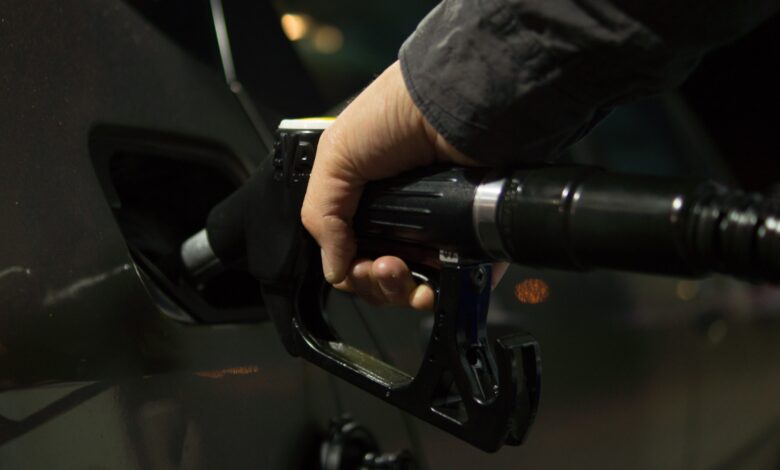
How to Clean Fuel Injectors Without Removing Them?
Cleaning fuel injectors without removing them is a relatively simple process that can be done at home. Here are the steps you can follow:
- Obtain a Fuel Injector Cleaning Kit: You can purchase a fuel injector cleaning kit from an auto parts store or online.
- Locate and Detach the Fuel Rail: The fuel rail is the metal rail that runs along the top of the engine and holds the fuel injectors in place. You will need to locate it and detach it from the engine.
- Disconnect the Regulator Pressure Line (if necessary): Depending on your vehicle, you may need to disconnect the regulator pressure line before proceeding.
- Fill the Cleaning Kit with Solvent: Fill the cleaning kit with solvent according to the manufacturer’s instructions.
- Suspend the Cleaning Kit on the Hood: Suspend the cleaning kit on the hood of your car using a bungee cord or other suitable device.
- Connect the Kit’s Outlet Pipe to the Vehicle’s Fuel Rail: Connect the outlet pipe of the cleaning kit to your vehicle’s fuel rail.
- Unscrew the Tank Cover: Unscrew your car’s gas tank cover and remove it.
- Turn on Your Car: Start your car and let it run for 15-20 minutes, allowing the cleaning solution to circulate through your fuel system.
Please note that this is a general guide, and you should always refer to your vehicle’s owner’s manual for specific instructions on how to clean your fuel injectors without removing them.
What are the signs of dirty fuel injectors?
Some common signs of dirty fuel injectors include:
- Engine Misfires: If your engine misfires or sputters, it could be a sign that your fuel injectors are dirty and not delivering the right amount of fuel to the engine.
- Rough Idle: Dirty fuel injectors can cause your engine to idle roughly or stall when you’re stopped at a red light or stop sign.
- Decreased Fuel Economy: If you notice that you’re getting fewer miles per gallon than usual, it could be due to dirty fuel injectors.
- Increased Emissions: Dirty fuel injectors can cause your vehicle to produce more emissions than usual, which can lead to a failed emissions test.
- Engine Performance Issues: Dirty fuel injectors can cause a variety of engine performance issues, including reduced power and acceleration, hesitation when you press the gas pedal, and poor engine response.
If you’re experiencing any of these symptoms, it’s important to have your fuel injectors checked and cleaned if necessary. You can clean your fuel injectors without removing them by following the steps I provided earlier .
What causes fuel injectors to get dirty?
Fuel injectors can get dirty due to a variety of reasons. Here are some of the most common causes:
- Low-Quality Fuel: Using low-quality fuel can cause impurities to build up in your fuel injectors over time.
- Clogged Fuel Filters: A clogged fuel filter can cause debris to accumulate in your fuel injectors, leading to blockages and other issues.
- Heat Soak: When you turn off your engine, the fuel injectors can become hot and cause any remaining fuel to evaporate, leaving behind deposits that can clog the injectors.
- Carbon Buildup: Carbon buildup can occur when your engine burns oil or runs rich, causing carbon deposits to form on the fuel injectors.
- Poor Maintenance: Failing to maintain your vehicle regularly can cause a variety of issues, including dirty fuel injectors.
If you’re experiencing any of the symptoms I mentioned earlier, it’s important to have your fuel injectors checked and cleaned if necessary. You can clean your fuel injectors without removing them by following the steps I provided earlier.
Can dirty fuel injectors damage my engine?
Yes, dirty fuel injectors can cause damage to your engine if left unchecked. A faulty fuel injector can cause poor performance, decreased mileage, and an increase in emissions from your vehicle. It can even lead to engine failure if not addressed promptly since running lean can burn out a piston. Therefore, it’s important to have your fuel injectors checked and cleaned if necessary. You can clean your fuel injectors without removing them by following the steps I provided earlier .
Can I replace a faulty fuel injector myself?
Yes, you can replace a faulty fuel injector yourself. However, it is important to note that replacing fuel injectors can be a tough and dangerous DIY job. You may be better off having a professional do this one. If you decide to proceed with the replacement yourself, here are some general steps you can follow:
- Let Your Car Cool Down and Disconnect the Battery: The fuel injectors fire fuel into your engine’s cylinders, so you may start a fire if you remove them while your vehicle is running. Let the car cool off for 30-45 minutes if you were driving recently. Pop your hood and put some gloves on. Then, remove the battery terminals to disconnect the battery.
- Locate the Fuel Injectors on Your Intake Manifold: Take a look right behind your engine (or above your engine, depending on how you think about it). See the 4-8 pipes leading into your engine? That’s your intake manifold. Your fuel injectors are the 4-8 connectors that run from the fuel rail into those pipes where they meet your engine.
- Remove the Fuel Injector Connectors on the Fuel Rail: The connectors should all have sleeved cables running from the injectors or rail and away from the engine. This will free up the fuel rail so you can safely pull it out without damaging any of the relevant wires. Depending on the make and model of your vehicle, you may need to use a screwdriver or wrench to unlock the connectors first.
- Remove Any Clips or Nuts Holding the Fuel Rail in Place: Once you have removed all of the connectors, you can remove any clips or nuts holding the fuel rail in place.
- Physically Pull Out the Individual Fuel Injectors: Once you have removed all of the clips or nuts holding the fuel rail in place, you can physically pull out each individual fuel injector.
- Purchase New Injectors Designed for Your Specific Engine: Purchase new injectors designed for your specific engine and dip their tips in fuel before reinstalling them and fuel rail.
Please note that these are general steps, and you should always refer to your vehicle’s owner’s manual for specific instructions on how to replace your fuel injectors.




